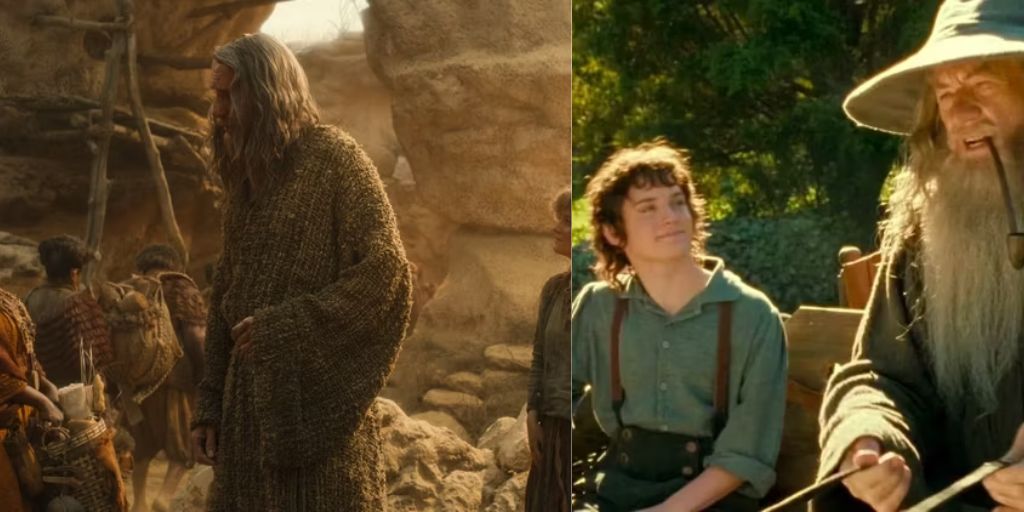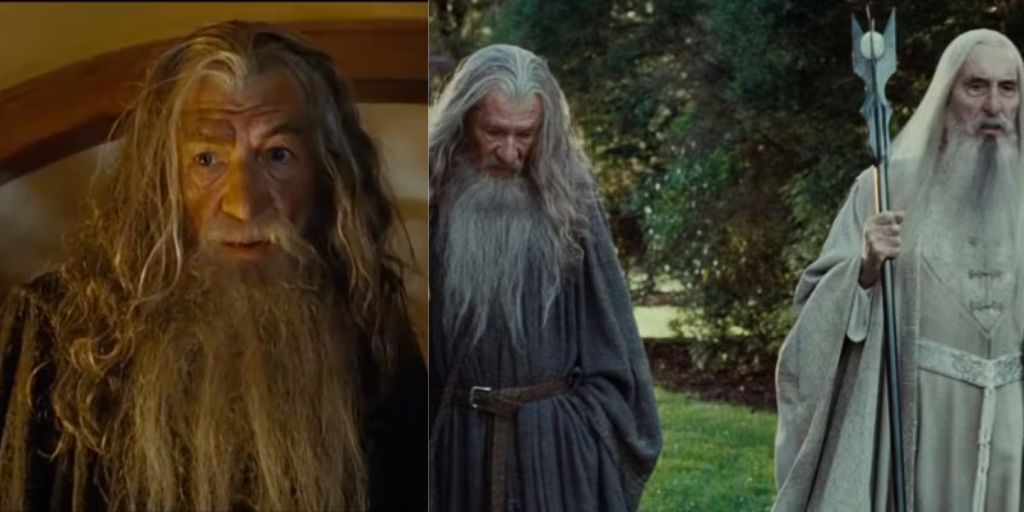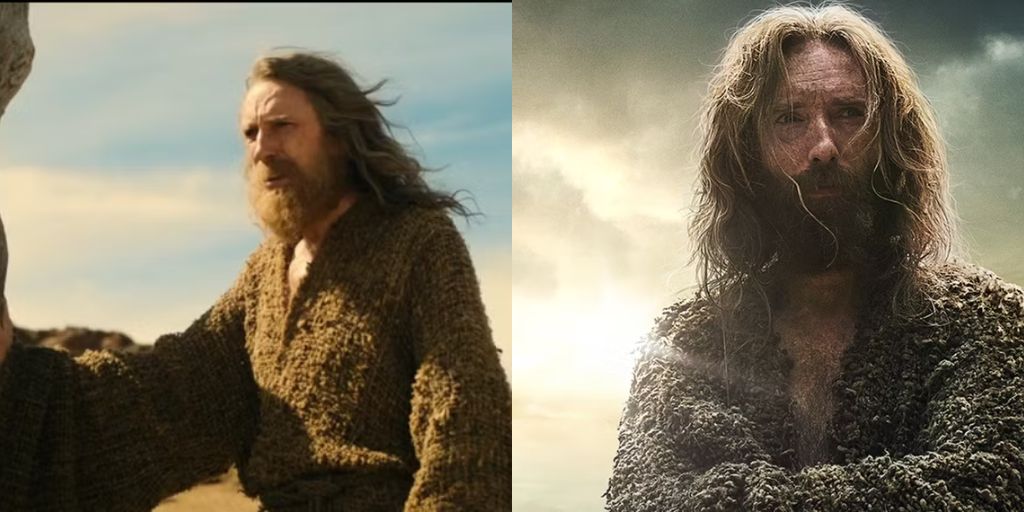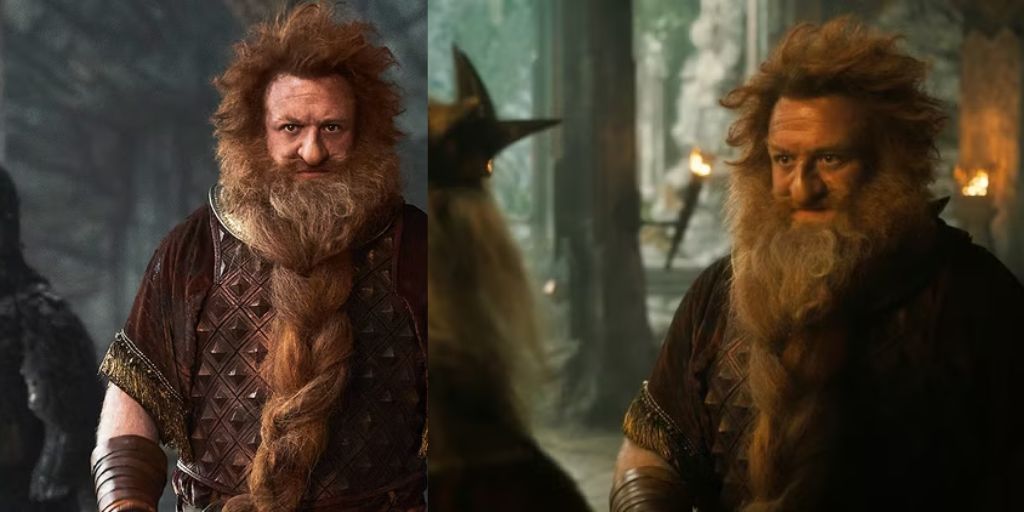The Season 2 finale of The Lord of the Rings: The Rings of Power delivered numerous surprises that left fans talking. The episode, titled “Shadow and Flame,” focuses on the character of Durin IV (played by Owain Arthur), who faces significant challenges as he ascends to the throne of Khazad-dûm.
This journey is not straightforward; it comes at the cost of losing his father to the fearsome Balrog of Morgoth. The implications of his rule unfold against a backdrop of political intrigue and familial rivalry, revealing a complex narrative rich with themes of power, loyalty, and the burdens of leadership.
The Rise of Durin IV Amidst Loss
In the aftermath of his father’s death, Durin IV’s ascension to the throne brings with it questions of legitimacy. His wife, Disa (played by Sophia Nomvete), and his steward, Narvi (Kevin Eldon), express concern about rumors circulating in Khazad-dûm.
According to these rumors, Durin IV was not the preferred heir of King Durin III (Peter Mullan). Instead, there are whispers that his brother, who has yet to be named, is gathering support from various Dwarf-lords to challenge Durin IV’s claim to the throne. This newfound threat raises questions about loyalty, family dynamics, and the broader implications for the Dwarven society.
The episode effectively sets up a tension-filled narrative that will likely play out in future seasons. The introduction of Durin IV’s brother, who poses a sudden and unexpected challenge, adds layers to the story. Viewers are left wondering who this brother is and why he has remained largely unmentioned until now.
This dramatic twist not only complicates Durin IV’s journey but also emphasizes the intricacies of Dwarven politics, which are deeply influenced by lineage, loyalty, and power.
Understanding the Dwarven Family Tree
To better comprehend the implications of Durin IV’s rise, it is essential to reference J.R.R. Tolkien’s original writings. The lore surrounding the Dwarves, particularly in the Second Age, is somewhat limited.
The Rings of Power takes creative liberties with Tolkien’s works, weaving a narrative that, while diverging from the original text, creates a compelling story in its own right. The series aims to build a coherent narrative that resonates with viewers, even if it occasionally strays from Tolkien’s established lore.
One of the challenges in this endeavor is the lack of detailed information about Durin III’s family tree. In the original texts, Tolkien did not show Dwarven history in depth during the Second Age. Most of what is known comes from the appendices of The Lord of the Rings and other brief writings.

These texts mention Durin III as the king of Khazad-dûm during significant events, such as the forging of the Rings of Power by the Elven smith Celebrimbor and the dark influence of Sauron, who disguises himself as Annatar.
Interestingly, while Durin III is a prominent figure in the Second Age, Tolkien’s writings do not provide clear details about his heirs or the dynamics of his family. In the original lore, Durin III faces no Balrog, as the creature does not awaken until later.
The books do not clarify whether Durin IV is indeed the son of Durin III, leaving a significant gap in the lore that The Rings of Power aims to fill. By introducing Durin IV as the son of Durin III and crafting a storyline that involves a sibling rivalry, the series opens up new possibilities for character development and plot progression within the context of Middle-earth.
The Awakening of the Balrog: A New Timeline
Another key aspect of the Season 2 finale is the introduction of the Balrog in Khazad-dûm. In Tolkien’s writings, there is no mention of the Balrog awakening during the Second Age.
However, The Rings of Power chooses to show this concept, suggesting that the show is depicting the fall of Khazad-dûm much earlier than Tolkien originally wrote. This decision allows the series to goes into themes of darkness and corruption that seep through Middle-earth, setting a darker tone for the unfolding events.
By bringing the Balrog into the narrative, the series not only creates a significant threat for Durin IV and his people but also establishes a connection to the greater history of Middle-earth.
The concept of darkness spreading through the land resonates with the overarching themes present in Tolkien’s works, where the struggle between light and darkness is a central focus.
Although the series may not adhere strictly to Tolkien’s timeline, it successfully creates a narrative that makes sense within its own framework, establishing a foundation for future conflicts and character arcs.
Durin VI and the Legacy of Khazad-dûm
The Balrog’s presence also ties into the larger history of Khazad-dûm, particularly in relation to Durin VI, who emerges in the Third Age. In the original lore, Durin VI is the king of Khazad-dûm who unwittingly awakens the Balrog while searching for mithril.
This event leads to his demise and the subsequent rise of Náin, his son, who becomes the last king of Khazad-dûm before he too falls to the Balrog’s wrath. The tale of Durin VI serves as a cautionary reminder of the dangers of greed and the perils of going too deeply into the earth.
The introduction of the Balrog in The Rings of Power allows for the possibility of reimagining characters and events from the Third Age. As the series progresses, there is potential to weave the storylines of Durin VI and Náin into the fabric of Durin IV’s journey.
For instance, Náin could be introduced as Durin IV’s brother, thus creating a rich narrative view that connects various timelines and characters. This integration would not only deepen the character development but also provide fans with a more cohesive understanding of the Dwarven lineage and its struggles.
A Power Struggle Within Khazad-dûm
The tensions between Durin IV and his brother set the stage for an intense power struggle within Khazad-dûm. As the story unfolds, viewers will likely see how this familial conflict influences the political dynamics of the Dwarven kingdom.
Durin IV’s claim to the throne is precarious, especially considering the rumors and the public knowledge of his estranged relationship with his father, Durin the Elder. This estrangement creates an environment where his brother might find support among those who question Durin IV’s legitimacy.

As Season 2 concludes, Durin the Elder acknowledges Durin IV as “King Durin.” However, this declaration lacks formal documentation, leaving room for doubt and dissent. The tension is palpable, and the stage is set for a clash of ideologies within Khazad-dûm.
Durin IV, who aims to stop the mithril mining and protect his people from the dangers lurking below, finds himself in direct opposition to his brother’s ambition. This conflict not only highlights the struggle for power but also the ethical dilemmas faced by leaders in times of crisis.
The Stakes Are Higher for Durin IV
As the narrative unfolds, Durin IV’s character is put to the test. He must follow the treacherous waters of political intrigue while grappling with the responsibilities of leadership.
The burden of kingship weighs heavily on his shoulders, especially as he strives to unite the Dwarves against external threats while also addressing internal conflicts. The introduction of a brother vying for the throne complicates matters further, making Durin IV’s journey one of self-discovery and resilience.
In the upcoming Season 3, viewers can expect to see how Durin IV confronts these challenges. The potential for conflict with his brother may lead to a deeper scheme of their relationship and the values they uphold.
Will Durin IV embrace the ideals of unity and protection, or will he succumb to the pressures of power and rivalry? The stakes are higher than ever, and the choices he makes will shape the future of Khazad-dûm.
The Importance of Family and Loyalty
The theme of family loyalty emerges as a crucial element in the unfolding narrative. Durin IV’s relationships with his father, his wife, and his brother play pivotal roles in shaping his character and decisions. The loyalty of Dwarven lords will also be tested as the power struggle intensifies.
Viewers will witness how personal bonds and allegiances are strained as characters grapple with the complexities of their identities and the expectations placed upon them.
Disa’s character, in particular, serves as a source of support for Durin IV. Her belief in his potential to lead Khazad-dûm is a guiding force as he faces the challenges ahead.
The dynamics between Durin IV, Disa, and their family further emphasize the significance of partnership and understanding in leadership. Disa’s role may become increasingly prominent as the narrative progresses, highlighting the importance of strong relationships in times of turmoil.
A Broader Perspective on Middle-earth
The events unfolding in Khazad-dûm resonate beyond the confines of the Dwarven kingdom. They reflect the broader struggles faced by various races in Middle-earth. As darkness spreads, the choices made by leaders in different realms will have far-reaching consequences.
The series hints at interconnected narratives, where the fate of one kingdom may impact others, showcasing the interconnectedness of Tolkien’s world.
In The Rings of Power, the struggle for power within Khazad-dûm serves as a microcosm of the larger battle against darkness that permeates Middle-earth.
The decisions made by Durin IV and his brother could set in motion a chain of events that influences the fate of other realms, echoing the themes of sacrifice, heroism, and the fight against evil that are central to Tolkien’s works.
Conclusion: Anticipation for Future Seasons
As the Season 2 finale of The Rings of Power concludes, audiences are left with many questions and a heightened sense of anticipation for what lies ahead.
The character of Durin IV is at the forefront of a narrative that intertwines themes of family, power, and the struggle against darkness. The introduction of his brother and the challenges he faces create a rich scheme of conflict that promises to unfold in future seasons.

With the potential for political intrigue, character development, and moral dilemmas, The Rings of Power is setting the stage for a attractive scene of Dwarven lore and the complexities of leadership.
As viewers prepare for Season 3, they can expect a deeper move into the struggles of Durin IV and the fate of Khazad-dûm, ultimately shaping the course of events in Middle-earth.
In the meantime, fans can catch up on all the thrilling moments of Season 2, now available to stream on Prime Video in the U.S. The journey through the Second Age of Middle-earth is far from over, and the surprises that await promise to keep audiences engaged and eager for more.














